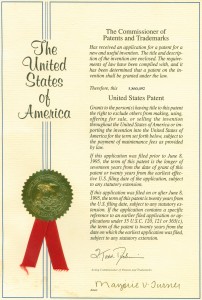When you think of patents, you think of added value to the corporation in the form of protection of its intellectual property. In fact, many corporations spend millions developing surrounding patents to form what is known as a “patent thicket,” much like Brer Rabbit jumped into to protect himself against his detractors in the briar patch. Investors like to see patents or patent applications as evidence of intellectual property value and barriers to entry.
But there is a darker side to patent protection. The cost for filing patents and extending the filings to multiple countries is expensive, but often manageable. The problems come from either prosecuting or defending a patent, and those problems can come in many forms.
[Email readers, continue here…] First, if your patent is challenged at any point, even after it has been granted, the cost of defense is dramatically higher than the original patent  filing and attorney fees. It has become a common practice for large companies to fight their patent wars in the Patent Office itself, by filing legal challenges, requiring re-examination and sometimes an appeals process that can lead all the way to appeals court.
filing and attorney fees. It has become a common practice for large companies to fight their patent wars in the Patent Office itself, by filing legal challenges, requiring re-examination and sometimes an appeals process that can lead all the way to appeals court.
Second, if you elect to prosecute a violator of your patent, you begin a process you cannot easily abandon. Depending upon the size of the company or companies you go after, some will counter sue for violation of adjacent patents they may own, or sue for causes seemingly unrelated to the patent. This happened to one of my companies, and the cost of defense escalated out of control, exceeding the cost of prosecution, ultimately contributing to the death of the company.
Third, if you are sued in a patent case, and elect not to settle the suit early (bypassing a strategy of the prosecution), then your defense costs increase over time to reach amounts a small company CEO would never permit if in control of the situation. But to defend a lawsuit is not to control it. And patent litigation can kill the small guy.









Dennis brings us a most important piece of news. I have already heard about one small company deciding to use this new channel to strategize their patent defense. With this many invalidations as representative outcomes, we should see a real change in the patent litigation system over time, including the reduction in litigation by so-called patent trolls, and a measurable lifting of backlog pressure upon the specialty courts.
I thought you might like a little additional detail. The new USPTO Patent Trial and Appeal Board (PTAB) and the related inter partes review process has been discussed extensively. The PTAB has so far (about March 2015) adjudicated 2500 patent cases and invalidated 73% of the patents brought before it. PTAB filings are up 200% since 2013 and District Court infringement filings are down 20%. A PTAB filing puts a stay on any District court litigation. Bringing a case to the PTAB costs around $1 million, and so, only the most important patents have been brought forward. Some of the cases are being appealed to the Federal Appeals Court (at an additional cost of $1.5-2 million), but so far most have been upheld. Also, recent key US Supreme Court rulings on software patentability (Alice), definiteness (Nautilus), fee shifting of legal fees (Highmark and Octane Fitness) and other patent matters, along with the performance of the new PTAB, have substantially decreased the value of naked patents.
Which is why I always recommend startups wait to file any patents until they have over $20M in revenues so they can play with the big boys. Until then, keep everything as a trade secret, and not letting any one person in the company know more than they need to do their job.